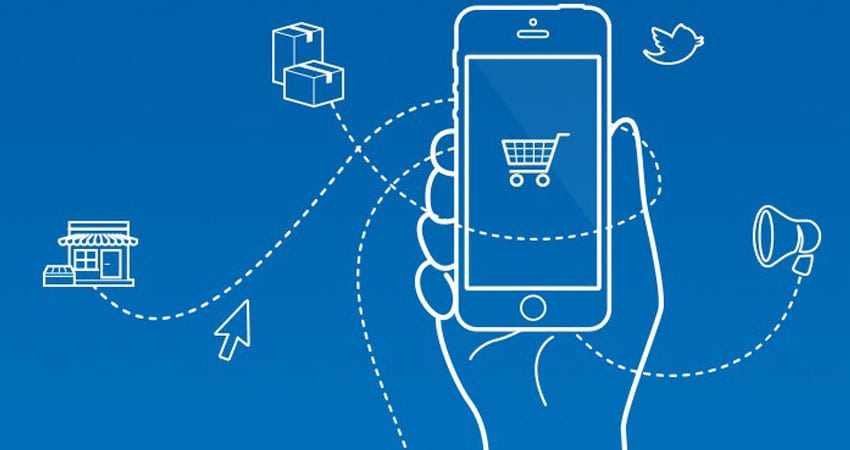Imagine you’re the CEO of an iconic American retail company. On paper, you have an easy job: turn a profit in an eight-year bull market armed with a brand everyone already knows and loves.Yet despite your best efforts, your business has been in a downward spiral. In just a few years, you’ve gone through multiple rounds of layoffs and store closures, and the specter of bankruptcy greets you every morning as you crawl out of bed.
This nightmare has been a reality for Sears, which just announced that it’s closing 66 more stores, adding to more than 180 closures already announced earlier this year. Sears isn’t alone either. Staples, Sports Authority, Hancock Fabrics and Tailored Brands (which owns Men’s Wearhouse and Jos A. Bank) have all recently declared bankruptcy or slashed their retail presence due to plummeting sales, and many more retail heavy hitters are staring into the same abyss. Staples’ stock is worth about half of what its value was three years ago, and about a third of its all-time high 10 years ago.
Ecommerce, and more specifically Amazon, usually shoulder the blame for this decline in the public and media’s eye, and while this is correct in some ways, there’s a bit of nuance and context missing. Traditional retail’s problems run much deeper.
Gone are the days when legacy brands can throw up an online catalog and rely on name recognition to draw people in. Customers today are far more savvy than they were even three years ago, and they expect more from retailers online: better service, more information, and more meaningful connections to a product or brand. People are far less likely nowadays to go online with the intent to buy a specific item from a specific store. They need to research, or are piqued by something they see on Instagram, a Google search, in a video or a thoughtful blog post.
There is a ray of sunshine through this gloom for brands who haven’t yet reached this customer-enlightened state of nirvana. The problems retailers face may be systemic, they’re not terminal – if they can keep an open mind to change. Here’s five big things traditional retailers can do to take a smarter approach to online commerce and customers.
Culture change: less BS, more analysis
A company’s culture – the driving force behind its purpose and practices – is as powerful a force as anything else. Retailers tend to focus on the now and measure and run their businesses based on metrics that measure what’s happening right now. How can we get our cash registers ringing tomorrow? This is completely understandable, but severely misguided. Analytics are of course crucial for retailers, but there’s a crucial choice: do these metrics help a company find healthy, long-term strategies or are they short-sighted vanity metrics?
Think like a customer
Today’s customers want differentiated experiences, rather than commodity products. Likewise, today’s companies succeed when they focus their outcomes around positive outcomes for their customers, rather than simply moving merchandise. Casper, American Giant and even Amazon are all great examples. Each of these new-era retailers have succeeded by knowing exactly what their customers want and giving it to them. While they each take different approaches – Casper is almost singularly focused on creating a brand new retail experience for its customers, American Giant is brand-driven, while Amazon is coldly analytical – each knows its customers, has figured out exactly what they want from it, knows how to guide them through evermore complex sales cycles.
Don’t just do Omnichannel, Be Omnichannel
Most traditional retailers have figured out that their survival relies on combining online experiences with their retail spaces. Doing that well is a different matter. Both Home Depot and Lowe’s have gotten attention for their approach to omnichannel sales, using offers and both customer- and employee-facing mobile apps to encourage online shoppers to pick up items in stores. Around half of each retailer’s’ orders are now being made online and picked up in person. The secret? Using data to figure out the different ways customers make a purchase. Things like easy-to-find and accurate product availability on their website and mobile app, as well as arming employees with useful tools to help customers and track inventory have helped the two stores hone in on a successful omnichannel strategy.
Trust meaningful data
Plenty of large retailers lost sight of what data actually matters. There’s a corporate culture in many companies that values an almost maniacal devotion to conversions and funnel goal, which don’t inform anything beyond short-term performance. What really matters is measuring long-term retention and engagement, which is an indicator that they’ve built and enjoyable customer experience, and created brand loyalty and long-term, repeat customers. Retailers have mountains of data that will tell them exactly what builds those experiences and engenders that loyalty. That’s the information that matters and it’s imperative that retailers figure out how to find it and understand how to use it to affect change.
Design Around Consumers
Part of that change is companies using meaningful information to add value each step of the way for customers. How can they make every interaction customers have with their brand as great as possible? Whether it’s in-store experiences, web design, social media, multimedia or content marketing, or mobile apps, data is an invaluable tool for designing engaging, meaningful paths for customers to travel. Again, Casper is a great example of this. The company sells five things, yet its website is immaculately designed to give potential customers a raft of information about each product, glowing reviews and articles about the company and easy paths to purchase, all wrapped in a cleanly designed, whimsical package. It’s as if the company’s website is its sixth product, created to make customers happy.
The most important change forced by the ecommerce era is a switch in the balance of power from companies to customers. People had been limited to shopping at whatever stores were a reasonable car or bus ride away from them, but now suddenly have stores in all corners of the globe open at all hours from their living room couch. Retailers need to understand customers and add value at every step of customer journey, not just drive them towards purchases. Their very survival depends on it.
Matin Movassate is Co-founder and CEO of Heap Analytics

